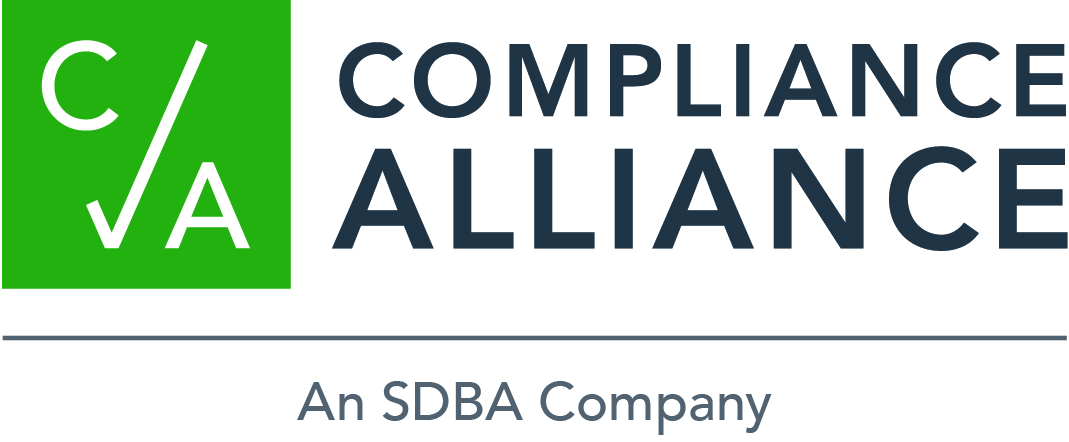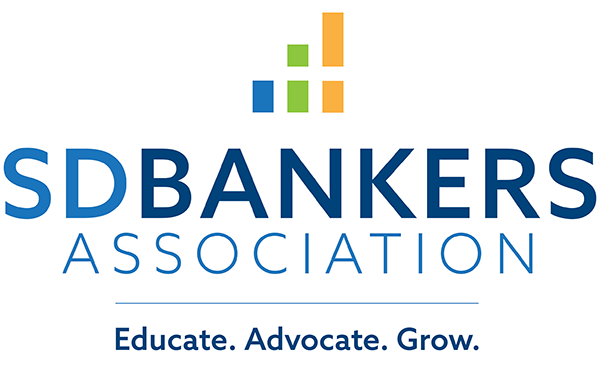|

SDBA Seeking Photos for 2019 Scenes of South Dakota Calendar
The SDBA is creating a customized calendar from photographs of South Dakota submitted by South Dakota bank employees, their family members and customers. If you are an amateur photographer and would like the opportunity to have your creativity displayed in the 2019 Scenes of South Dakota Calendar, this is your chance.
Send the SDBA your photos of farms, barns, agricultural activities, historical South Dakota locations, county fairs, carnivals, parades or festivals, fall colors, winter snowfalls, spring flowers, or summer fun. Any photo that shows the history and beauty of the great state of South Dakota qualifies. All photos submitted will be judged and the top photos will be featured throughout the 2019 Scenes of South Dakota calendar. The deadline to submit a photo is July 28. Photo submission form.
The 2019 Scenes of South Dakota Calendar is exclusive to SDBA member banks and associate members. These calendars are a great opportunity to thank your customers for their business and promote your bank or business. Your bank, branch or business' logo and name can be printed on each calendar to display in homes and businesses all year long. Calendar orders are due by Sept. 1 to get the low price of $1.19 per calendar. Learn more and place a calendar order.
Fed Proposes Overhaul of Volcker Rule to Tailor Compliance Burdens
The Federal Reserve Board yesterday unanimously voted to propose a long-awaited set of changes to the Volcker Rule that is expected to simplify the rule’s compliance burdens and better target the rule’s effects toward intended activities. Other agencies are expected to issue the proposal in the coming days. The proposal would tailor the rule by focusing its restrictions on proprietary trading and investments in covered funds on banks with “significant” and “moderate” trading activities; banks with limited trading assets and liabilities of less than $1 billion would have a rebuttable presumption of compliance with the Volcker Rule.
By tailoring the rule to trading activity levels, the rule would focus supervisory efforts on the 40 firms with significant or moderate activities, which the Fed said accounts for 98 percent of U.S. trading activities by banks. This proposal would combine with a provision in the recently enacted S. 2155 that generally exempts banks with less than $10 billion in assets from Volcker Rule requirements to significantly reduce the rule’s burden on community banks.
Banks with the most significant trading activities--defined as trading assets and liabilities of more than $10 billion--would face the strictest compliance regime, including the six-pillar compliance program specified in the 2013 final rule. Meanwhile, banks with moderate trading activities would be allowed to establish a simplified compliance program that includes CEO attestation. “This proposal represents our best first effort at simplifying and tailoring the Volcker rule,” said Fed Vice Chairman for Supervision Randal Quarles. “I view this proposal as an important milestone in comprehensive Volcker Rule reform, but not the completion of our work.”
“With the passage of legislation last week and today’s proposed rulemaking, policymakers are now taking sensible steps to better tailor regulations consistent with risk,” added ABA President and CEO Rob Nichols. “We are encouraged that today’s proposed rulemaking begins to address some of the complexity and uncertainty that has created needless compliance burdens and will allow banks to better serve their customers.”
The proposal would also address several compliance issues that have arisen since the Volcker Rule was finalized in 2013, including: revising the definition of “trading account” under the proprietary trading restrictions; clarifying the exemptions for permitted underwriting and market-making activities; removing or reducing certain hedging requirements; modifying foreign banks’ permitted trading activities; and clarifying activities connected to organizing or offering a covered fund. ABA staff will review the proposal in depth over the days to come. Comments are due 60 days after it is published in the Federal Register. Read the proposed rule. For more information, contact ABA's Tim Keehan.
President Trump Signs Landmark ABA-Advocated Regulatory Reform Bill into Law
President Trump last Thursday signed S. 2155--which was passed earlier last week by a bipartisan majority in the House--into law. The new law is a critical first step toward bringing much-needed regulatory relief to help banks better serve their customers and communities, and came as a result of a persistent, eight-year advocacy effort on the part of bankers, state associations and ABA to address some of the unintended consequences of Dodd-Frank.
“Today’s signing ceremony concludes years of dedicated advocacy by ABA members across the country who showed that some of the rules in place were hurting not helping the country,” said ABA President and CEO Rob Nichols in a statement thanking the president. “House and Senate lawmakers from both parties listened to what we and others had to say and delivered this victory for both their constituents and the broader economy. We believe there is more that can and should be done to right-size financial rules while maintaining needed safety and soundness, and we look forward to working with members of Congress, the regulatory agencies and the administration to achieve more progress in the months ahead.”
With the bill’s signing, select provisions take effect immediately, for example, an exclusion from the Volcker Rule for most community banks. In a special bonus episode of the ABA Banking Journal Podcast, two of ABA’s top regulatory experts walk through how changes in the law will be implemented in the weeks and months ahead, and Nichols and ABA Chairman Ken Burgess recap the banker-led advocacy effort that made the law possible. ABA has also prepared a number of resources highlighting the changes.
ABA is urging bankers to write to their representatives to either thank them for voting “yes” on S. 2155 or express disappointment that they voted "no." The association is also encouraging state associations and member banks to consider thanking the bill's supporters in Congress publicly through social media, op-eds or print advertising. As the industry pursues further changes to financial regulatory policy, bankers should continue sharing stories with their lawmakers that will help them craft additional commonsense solutions for regulatory reform.
ABA's S. 2155 Webinar Now Available for Download
More than 2,000 bankers registered for a webinar on Tuesday with ABA President and CEO Rob Nichols and ABA’s top legislative and regulatory experts discussing S. 2155--the new regulatory reform law--and what it means for banks. The hour-long webinar provided a deep dive into various provisions of the new law and a look at what the industry will tackle next on the path to making commonsense changes to the nation’s financial regulatory framework.
The webinar is available for download on ABA’s dedicated S. 2155 resource page. Other resources include an executive summary of the bill, highlights and testimonials and an implementation guide. Download a recording of the webinar. View ABA’s S. 2155 resources.
Trump Administration Calls for Broad Collaboration to Counter Botnet Threat
A report issued by the Departments of Commerce and Homeland Security yesterday called for widespread collaboration between government and industry stakeholders to combat the growing threat of botnets and other automated, distributed cyber threats. These types of crippling cyberattacks have been on the rise in recent years, and the report noted that “the increasing size and scope of attacks appear to be testing the limits” of sector-wide resilience.
Of key concern is the number of poorly secured “internet of things” devices -- which range from routers to home security devices to “smart” appliances--that can be easily overtaken by cybercriminals and used as botnets to distribute malicious material. The report underscored the importance of ensuring that internet-enabled gadgets can be properly secured throughout the lifecycle of the device, noting that “market incentives must be realigned to promote a better balance between security and convenience when developing products.”
In all, the report makes a total of 24 recommendations of how government and industry work to ensure sector-wide resilience in the face of a botnet attack. It calls for DHS and Commerce to develop a roadmap within 120 days outlining priorities for addressing the threat of botnets and deliver a one-year status report on implementation.
It also calls for an industry-led effort--in consultation with the National Institute of Standards and Technology--to develop guidance and best practices for preventing and mitigating enterprise distributed denial of service, or DDoS, attacks. This would help to “establish a common language for discussions regarding DDoS protection mechanisms with product vendors, ISPs, and other infrastructure providers” and “would help enterprises identify opportunities to improve DDoS threat mitigation and aid in cybersecurity prioritization by comparing their current state with the desired target state,” the report said. Read the full report. For more information, contact ABA's Denyette DePierro.
FCS Further Curbs Lending to Small Borrowers
Recent data released by the Farm Credit System highlights the declining commitment of FCS to serving young, beginning and small farmers, Bert Ely reported in the latest Farm Credit Watch bulletin yesterday. While Farm Credit System lending increased 9.7 percent overall between 2015 and 2017, the total value of loans to YBS farmers remained flat, rising from $32.64 billion at the end of 2015 to $32.85 billion at the end of 2017, and accounting for just 12.7 percent of total FCS lending.
Meanwhile, lending to FCS’ largest borrowers has increased significantly, Ely noted. Between 2015 and 2017, the total number of borrowers with at least $25 million in loans outstanding rose from 804 to 982, and accounted for 30.2 percent of all FCS lending. “Not only are the FCS’ largest borrowers becoming more numerous--a 22 percent increase in just two years--but their share of FCS borrowing increased by 2.7 percentage points,” Ely wrote. “I suspect many of these large borrowers are agribusinesses and utilities, not farmers or ranchers.” Read more.
CFPB, FinCEN to Host Webinar on Combating Elder Financial Abuse
The Consumer Financial Protection Bureau and the Financial Crimes Enforcement Network will host a briefing on Thursday, June 7, at 1 p.m. CDT on their joint memorandum encouraging coordination among financial institutions, law enforcement and adult protective services to protect older Americans from financial exploitation. The webinar will focus specifically on the role of Suspicious Activity Reports in assisting law enforcement’s investigation of elder financial exploitation. Registration is required.
As banks continue the fight against elder abuse, the ABA Foundation has compiled a number of resources bankers can use to raise awareness about financial exploitation among older Americans. ABA’s Safe Banking for Seniors program provides free presentation lessons, activities and other materials to educate older Americans and their caregivers about how to bank more securely. The foundation also recently launched FinEdLink, which connects registered banks with community organizations or agencies to provide banker-led presentations in the community. To learn more, visit aba.com/seniors. Register for the CFPB/FinCEN webinar.
Seats Still Available for Graduate School of Banking at Colorado
There are still seats available for the 68th annual school session of the Graduate School of Banking at Colorado (GSBC) to be held July 15-27 at the University of Colorado in Boulder.
Since 1950, banks have trusted GSBC to prepare the next generation of community bank leaders. This legacy, combined with a cutting-edge curriculum, expert faculty and state-of-the art facilities makes GSBC's 25-month banking school an ideal management training program for community banks nationwide.
More than 450 bankers, regulatory professionals and other financial-services representatives combined experience GSBC each year. GSBC is committed to providing the banking industry and its constituents with the tools necessary to create tomorrow’s leaders. Learn more and register.
 Question of the Week Question of the Week
Question: If a customer completes a Certification of Beneficial Owners form for a DDA account and opens a loan on the same day, may one form be used or should we have a form completed for each account?
Answer: You may use one form in this case since you have obtained a certification form--as long as the information is accurate and up-to-date (assuming yes since same day).
https://www.fincen.gov/sites/default/files/2018-04/FinCEN_Guidance_CDD_FAQ_FINAL_508_2.pdf
"If a legal entity customer opens multiple accounts at a covered financial institution (whether or not simultaneously), must the financial institution identify and verify the customer’s beneficial ownership for each account?
A. Generally, covered financial institutions must identify and verify the legal entity customer’s beneficial ownership information for each new account opening, regardless of the number of accounts opened or over a specific period of time. However, an institution that has already obtained a Certification Form (or its equivalent) for the beneficial owner(s) of the legal entity customer may rely on that information to fulfill the beneficial ownership requirement for subsequent accounts, provided the customer certifies or confirms (verbally or in writing) that such information is up-to-date and accurate at the time each subsequent account is opened and the financial institution has no knowledge of facts that would reasonably call into question the reliability of such information. The institution would also need to maintain a record of such certification or confirmation, including for both verbal and written confirmations by the customer."
Not a Compliance Alliance member? Learn more about membership with Compliance Alliance by attending one of our live demos:
Compliance rules and regulations change quickly. For timely compliance updates, subscribe to Compliance Alliance’s email newsletters.
Compliance Alliance offers a comprehensive suite of compliance management solutions. To learn how to put them to work for your bank, call 888.353.3933 or email.
SDBA eNews Archive
View past issues of the SDBA enews
Advertising Opportunity
Learn more about sponsoring the SDBA eNews.
Questions/Comments
Contact Alisa DeMers, SDBA, at 800.726.7322 or via email.
|


